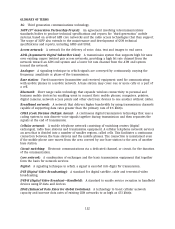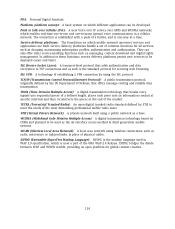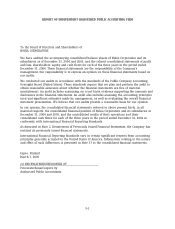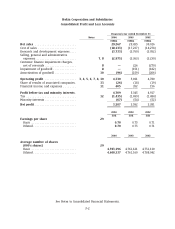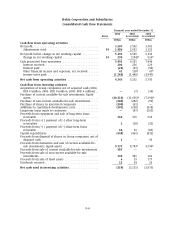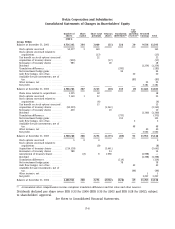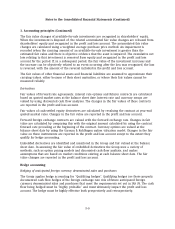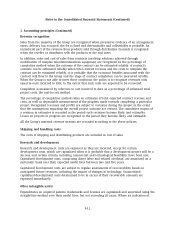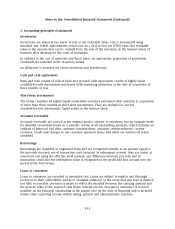Nokia 2004 Annual Report Download - page 133
Download and view the complete annual report
Please find page 133 of the 2004 Nokia annual report below. You can navigate through the pages in the report by either clicking on the pages listed below, or by using the keyword search tool below to find specific information within the annual report.Notes to the Consolidated Financial Statements (Continued)
1. Accounting principles (Continued)
The Group adopted the transition provisions of IFRS 3, Business Combinations, with effect from
April 1, 2004. As a result, goodwill relating to purchase acquisitions and acquisitions of associated
companies for which the agreement date was on or after March 31, 2004, is no longer subject to
amortization. Goodwill arising in business combinations completed before March 31, 2004 will
continue to be amortized until the standard is fully adopted as of January 1, 2005.
The Group assesses the carrying value of goodwill annually or, more frequently, if events or
changes in circumstances indicate that such carrying value may not be recoverable. If such
indication exists the recoverable amount is determined for the cash-generating unit, to which
goodwill belongs. This amount is then compared to the carrying amount of the cash-generating
unit and an impairment loss is recognized if the recoverable amount is less than the carrying
amount. Impairment losses are recognized immediately in the profit and loss account.
Transactions in foreign currencies
Transactions in foreign currencies are recorded at the rates of exchange prevailing at the dates of
the individual transactions. For practical reasons, a rate that approximates the actual rate at the
date of the transaction is often used. At the end of the accounting period, the unsettled balances
on foreign currency receivables and liabilities are valued at the rates of exchange prevailing at the
year-end. Foreign exchange gains and losses related to normal business operations are treated as
adjustments to sales or to cost of sales. Foreign exchange gains and losses associated with
financing are included as a net amount under financial income and expenses.
Foreign Group companies
In the consolidated accounts all items in the profit and loss accounts of foreign subsidiaries are
translated into euro at the average foreign exchange rates for the accounting period. The balance
sheets of foreign Group companies are translated into euro at the year-end foreign exchange rates
with the exception of goodwill arising on the acquisition of a foreign company, which is
translated to euro at historical rates. Differences resulting from the translation of profit and loss
account items at the average rate and the balance sheet items at the closing rate are also treated
as an adjustment affecting consolidated shareholders’ equity. On the disposal of all or part of a
foreign Group company by sale, liquidation, repayment of share capital or abandonment, the
cumulative amount or proportionate share of the translation difference is recognized as income or
as expense in the same period in which the gain or loss on disposal is recognized.
Fair valuing principles
Financial assets and liabilities
Under IAS 39, the Group classifies its investments in marketable debt and equity securities and
investments in unlisted equity securities into the following categories: held-to-maturity, trading, or
available-for-sale depending on the purpose for acquiring the investments. All investments of the
Group are currently classified as available-for-sale. Available-for-sale investments are fair valued
by using quoted market rates, discounted cash flow analyses and other appropriate valuation
models at the balance sheet date. Certain unlisted equities for which fair values cannot be
measured reliably are reported at cost less impairment. All purchases and sales of investments are
recorded on the trade date, which is the date that the Group commits to purchase or sell the asset.
F-8


